Broadway’s Top Dressing Room Designer Shares Small-Space Decorating Tips You Can Use
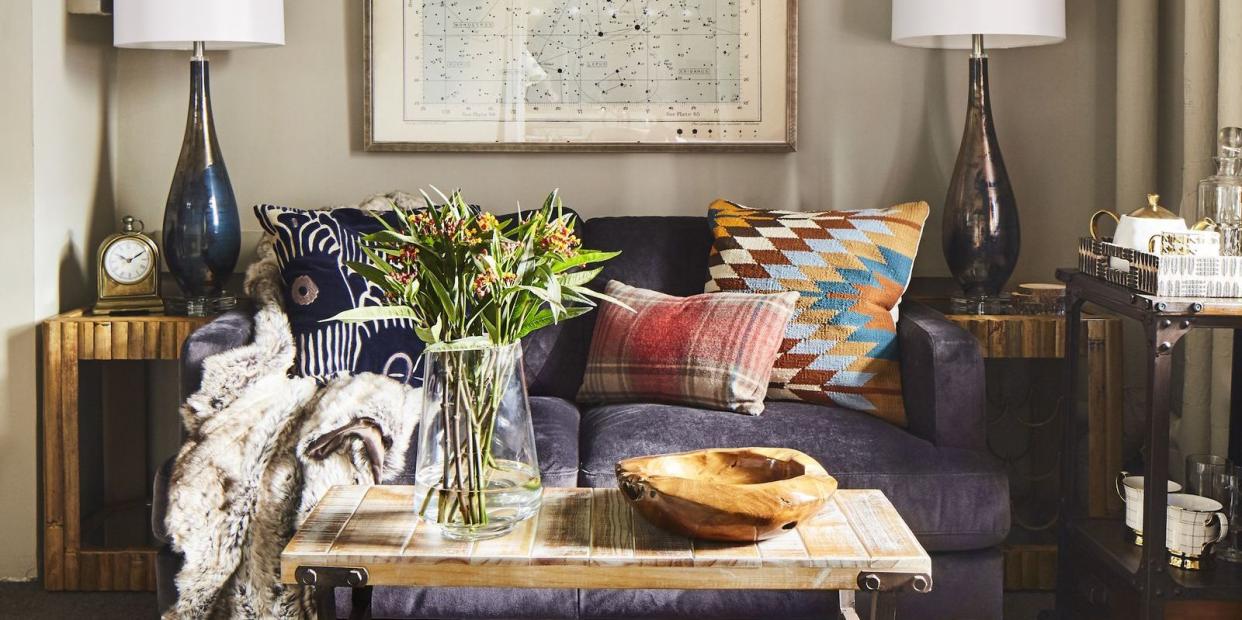
When it comes to the challenges of small-space decorating, Broadway dressing rooms steal the show. Forget the glitz and glamour you would expect of these backstage havens; in most theaters, jaw-dropping set design ends when the curtain falls.
In reality, the dressing rooms assigned to actors — including some of the biggest names in entertainment — are usually small gray boxes with little-to-no natural light and a cast of quirky oddities, ranging from exposed pipes to ill-placed crannies.
For the artists who spend six days a week in these cramped quarters, this institutional aesthetic can be less than inspiring.
Enter Mike Harrison, stage left.
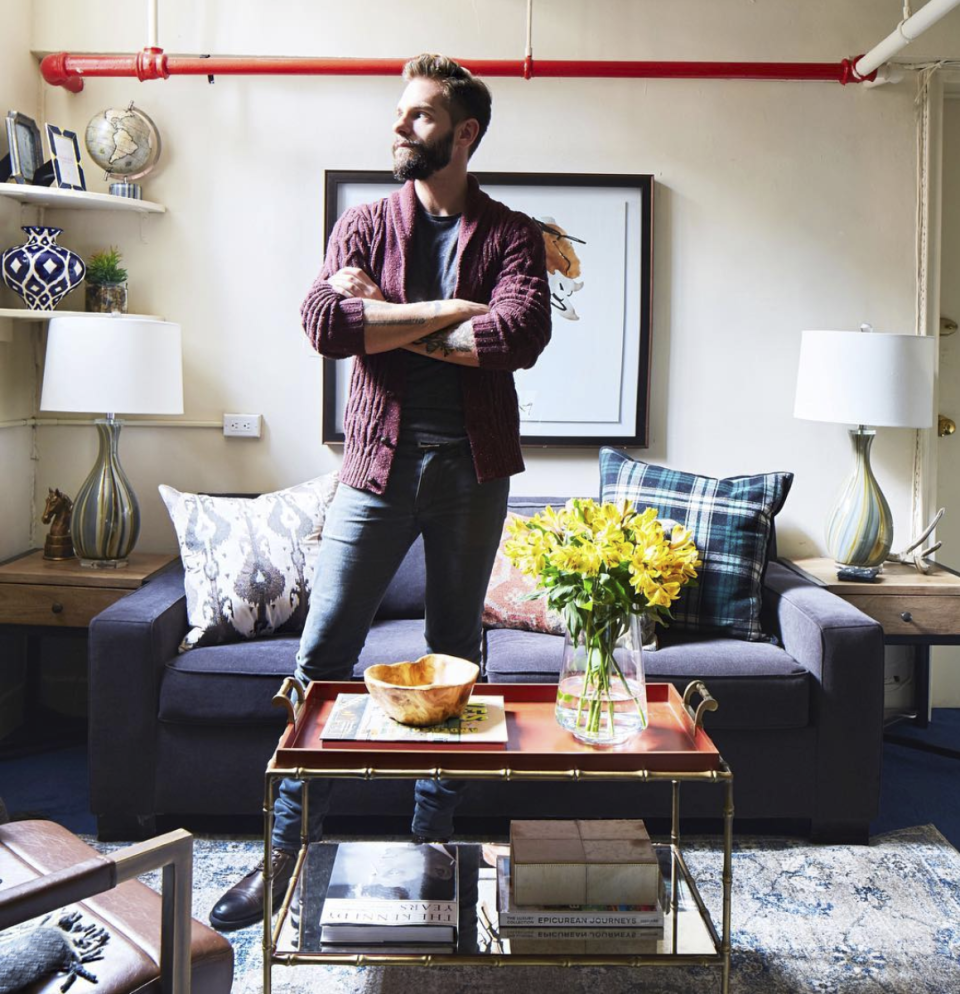
Almost by accident, this New York City designer became an expert on what he calls the “windowless, glorified prison cells” of Broadway after taking on what he thought would be a one-off project designing a dressing room for his friend and Hamilton star Leslie Odom Jr. in 2015.
The project was featured in a Playbill article, and word traveled quickly throughout the close-knit New York theater community. Just five years later, he has become known as the Broadway dressing room designer, creating spaces for Cynthia Erivo, Lupita Nyong'o, Jake Gyllenhaal, Josh Groban, Amy Schumer, and other A-listers.
With more than 100 dressing rooms under his belt, plus a number of residential projects throughout the city, Harrison has made minuscule makeovers his calling card and is currently in production on a TV series that chronicles his work with small spaces (and sometimes even smaller budgets).
“With small spaces, you can make a huge impact in very little time,” he says. “And if you want to change up the whole vibe, it doesn’t take a lot to do it. It’s not overwhelming.”
Here, Harrison’s top tips and tricks for decorating awarding-winning, star-worthy rooms of any size.
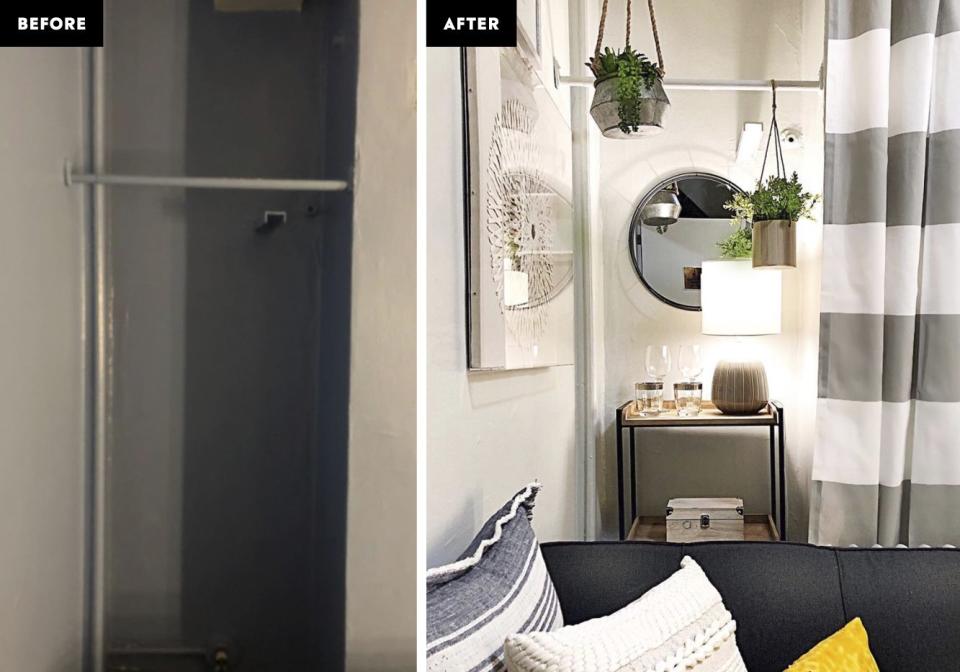
Design with intention for the space you have.
“You are not going to make a 250-square-foot studio feel like a Tribeca loft,” Harrison says. “Instead of fighting against it, make it even cozier.”
When he designed Ben Platt’s dressing room for Dear Evan Hansen, an exposed overhead pipe directly over the sofa could have been an eyesore. But instead of camouflaging it, Harrison painted the pipe fire-engine red. In another dressing room, an awkward nook that could have been ignored was repurposed as a chic bar alcove, which quickly became the client’s favorite feature.
“Instead of hiding a flaw, highlight it so that it looks intentional,” Harrison says. “Make the thing that annoys you the star of the room.”
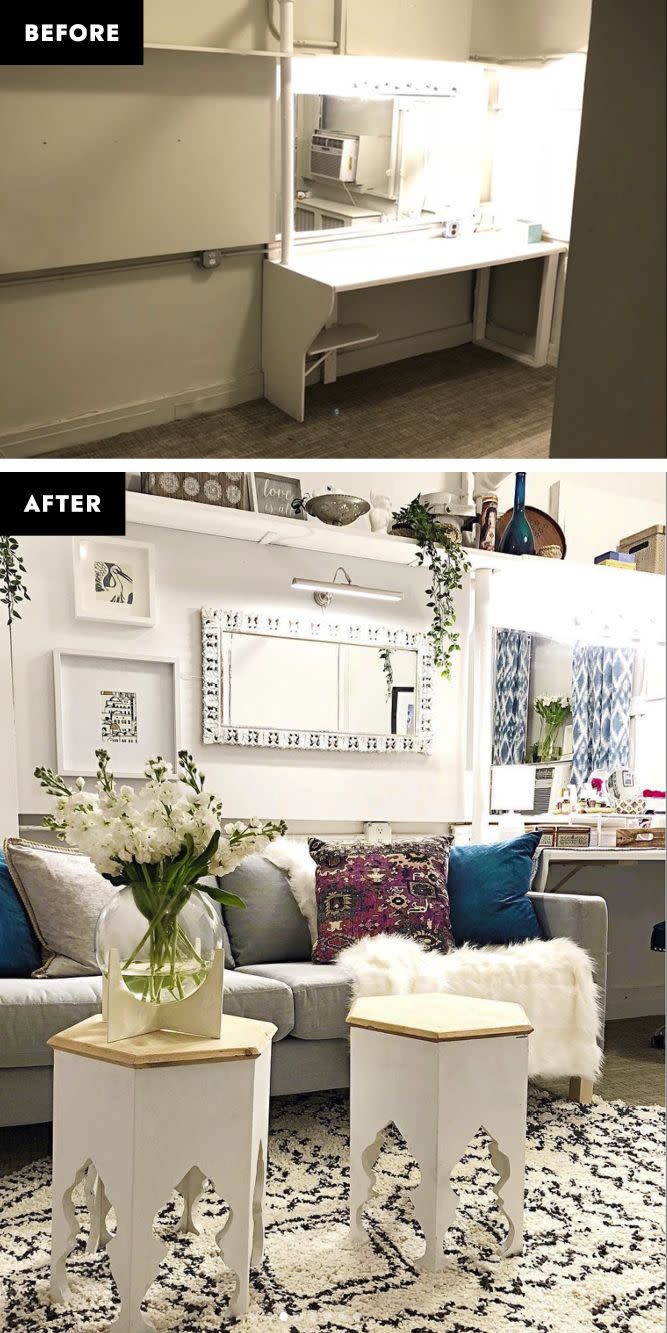
Consider alternative uses for furnishings.
When shopping for a new piece of furniture, don’t be afraid to think outside the box. “An end table or side table can make the perfect coffee table for a smaller room,” Harrison says.
Because actors often receive guests after a show, he especially likes dual-purpose furniture that can be moved easily, such as stools that can serve as both accent tables and extra seating.
Maximize your lighting options.
By including a mix of table lamps, floor lamps, and task lamps in every room, Harrison tries to make it so that his clients “never have to turn on an overhead light.” His dressing rooms transition easily from bright work zones where actors can try on costumes or apply makeup to low-lit lounges, perfect for taking a nap or enjoying a post-show cocktail with friends.
“I like to have lighting options in every corner of the room so that you can easily control the mood,” he says.
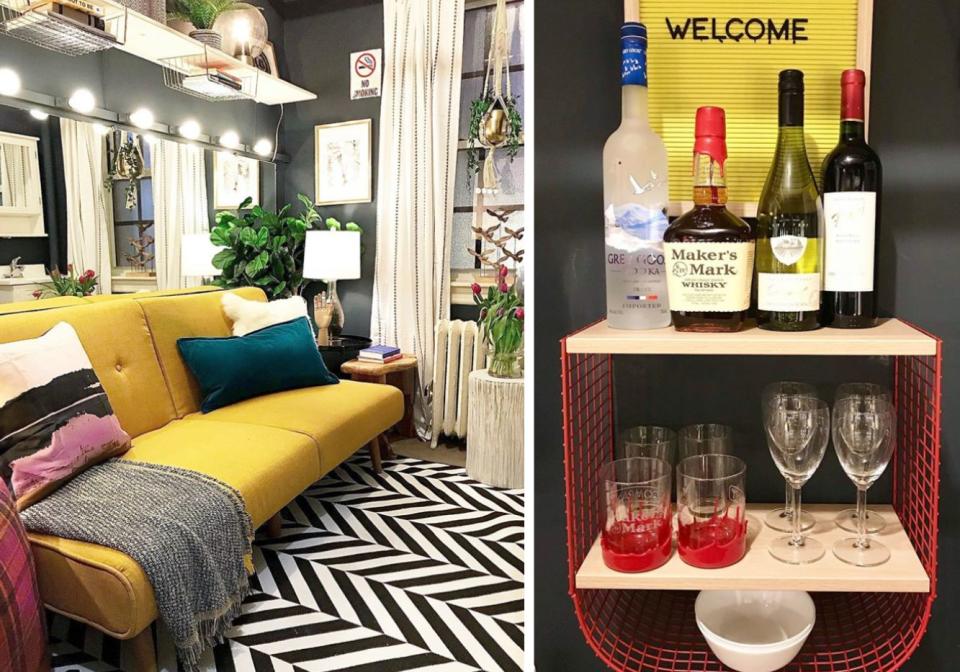
Design vertically.
When Tony-winner Katrina Lenk wanted a bar in her dressing room for the revival of Company, Harrison knew that the limited square footage may not allow such an indulgence. Instead, he found a shelving unit that could be anchored to the wall, creating storage for glassware and bottles without sacrificing an inch of floor space.
Floating shelves and gallery walls can also take advantage of a room’s height, by drawing the eye skyward. “You can’t make the space bigger,” he says. “So think up.”
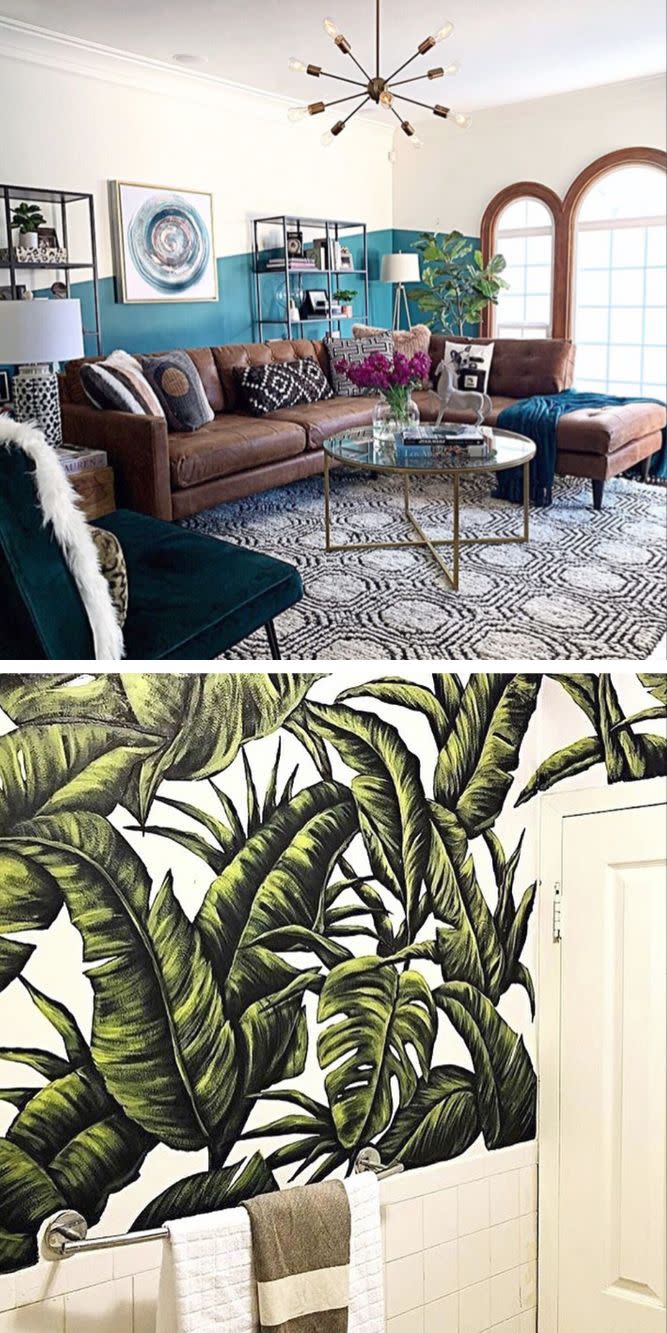
Let paint stand in for architecture.
An accomplished muralist, Harrison extols the virtues of using paint to transform walls and add architectural interest to boxy rooms; witness the gutsy palm design he painted in his own bathroom.
Abstract diagonal lines and geometric shapes are often painted on the walls for his more daring clients, adding both architecture and modern art with just a few brush strokes. But for more conservative aesthetics, an accent wall can accomplish the same effect.
For studios with one long wall anchoring both the sleeping and living areas, Harrison has a go-to tip for making a big statement while separating the spaces — all with no artistic skill required: Paint a color block behind either the sofa or bed and then hang a gallery wall in the same spot for maximum impact. This trick works whether you opt for a contrasting color or a tone just a few shades darker than the wall itself, he adds.
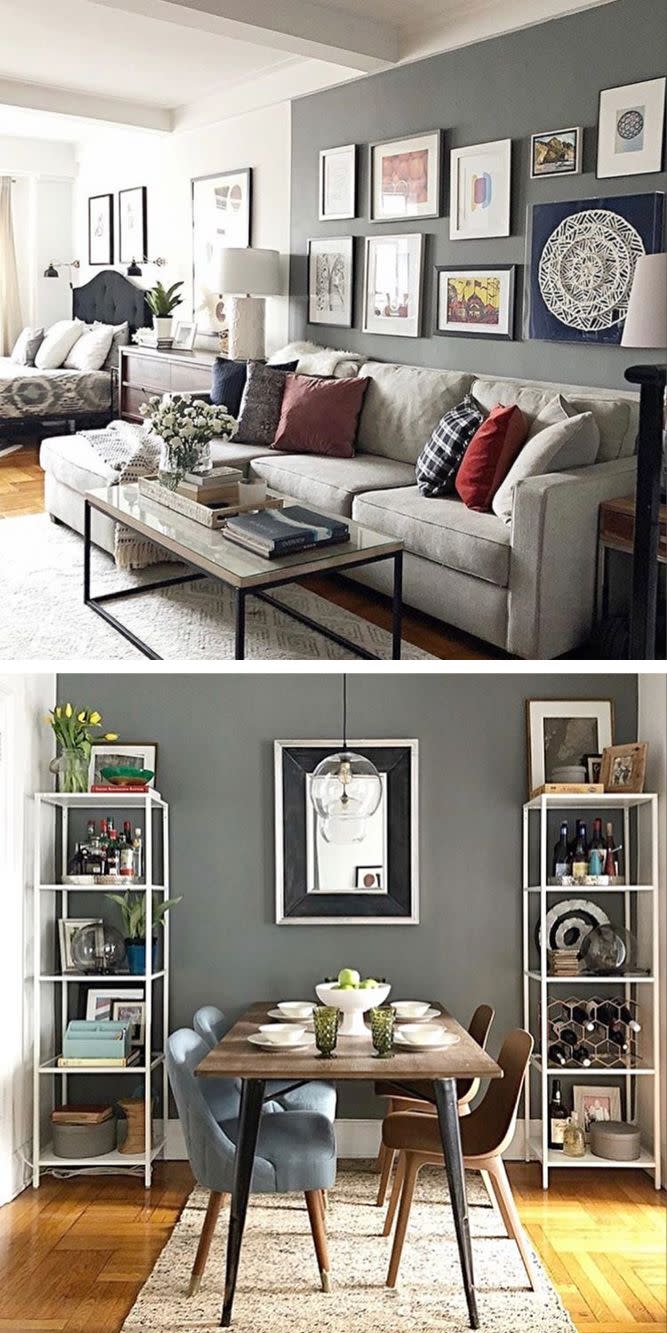
Use rugs to create distinct areas — and a cozy vibe.
Whether he is designing a dressing room or a city dwelling, Harrison almost always works with spaces that need to serve several purposes. In a studio apartment, he finds using individual rugs to anchor a bed, sofa, and dining table can trick the eye into seeing separate areas without blocking off any of the room.
In even cozier spaces, Harrison advocates overlapping smaller rugs to create texture and contrast, as well as a laid-back vibe. It can even help mask a lack of seating. “Layering rugs makes everything feel much less precious and more relaxed,” he says, “which is why you always see it in Moroccan design. [It invites you to] take off your shoes and sit on the ground.”
Layer styles eclectically — and don’t be afraid to change things up later.
While it’s easy to think that less is more in small spaces, Harrison finds that mixing styles is crucial to keep tiny rooms from looking too much like a hotel or catalogue vignette. “Eclectic is just more interesting,” he says. “In a small room, your eye should be dancing all over the place.”
The added benefit of an eclectic style is that it is easy to introduce a new accessory or piece of art when you spot something you can’t live without. “You can play more with it and swap out things whenever you want,” Harrison says.
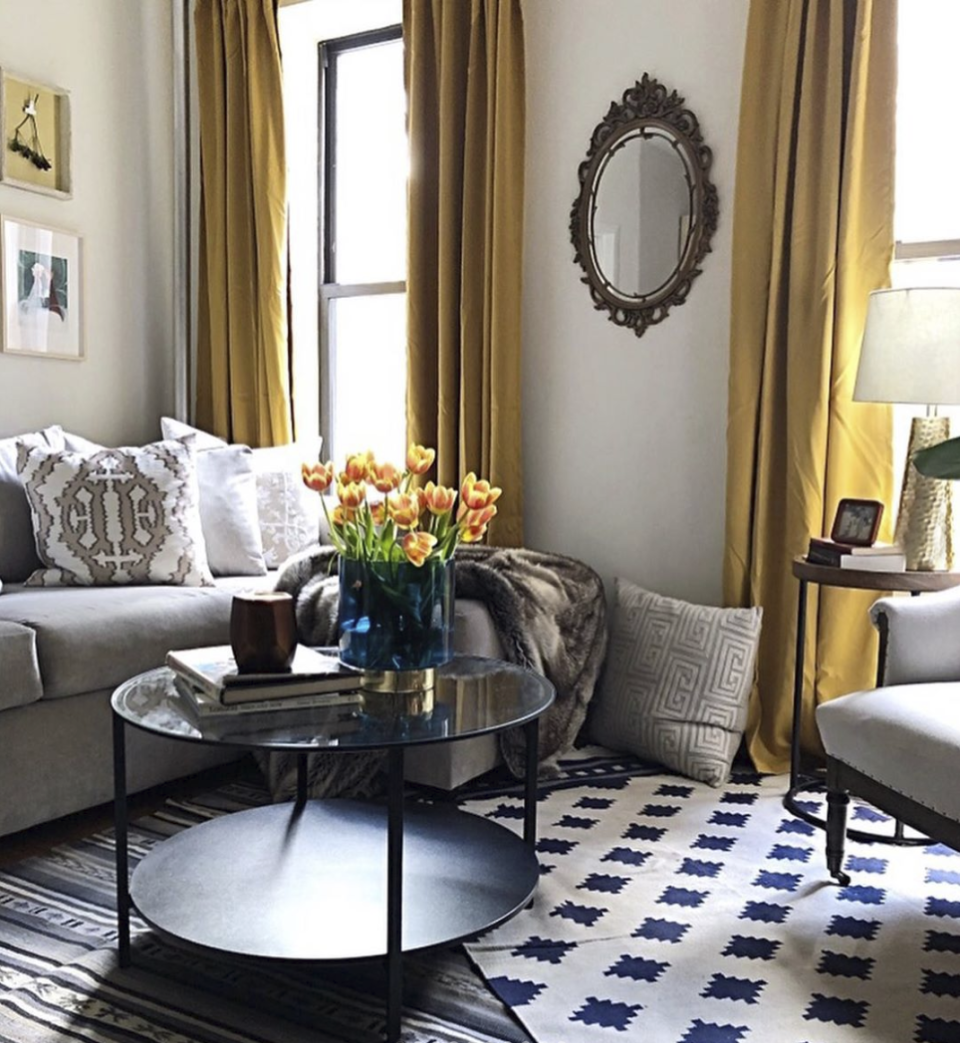
Make flowers and plants your finishing touch.
Adding fresh blooms or greenery instantly makes any room feel more open and airy, but in the windowless confines of a Broadway dressing room, this hint of the outdoors can be priceless.
“I won’t take a photo without flowers,” Harrison says. “We could be running down to the wire, and I will tell my assistant: You have to run to the corner store and get some yellow tulips.”
After completing some eye-popping makeovers for his celebrity clients, the vase of fresh flowers he leaves behind is often the first thing they notice. And Harrison would have it no other way.
“Even in my first apartment, sometimes when I could barely afford food, I made it a ritual that I would spend at least $5 on flowers every single Wednesday,” he says. “It really shows that you put your home — and yourself — first.”
You Might Also Like

